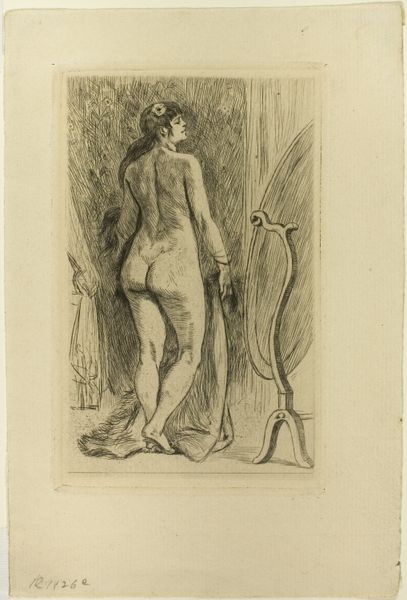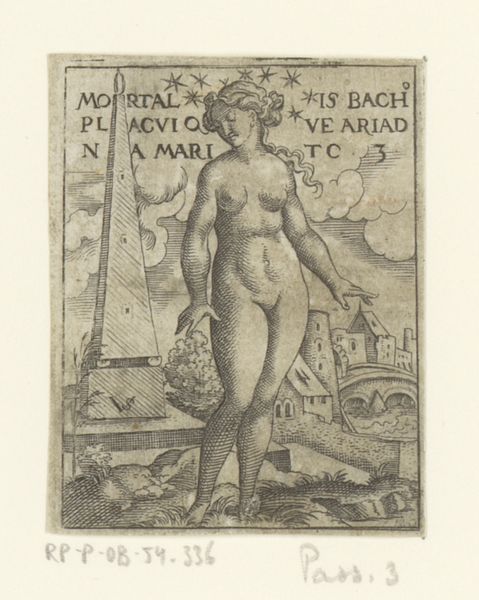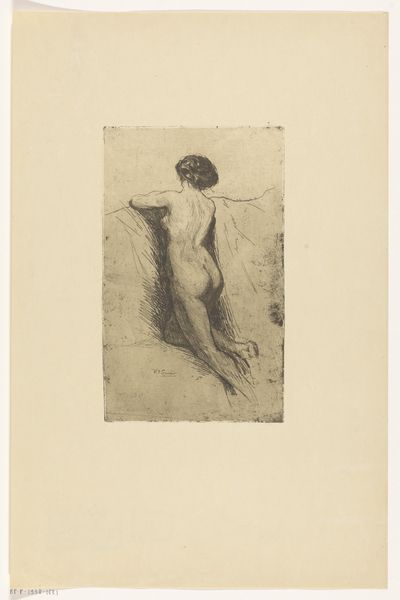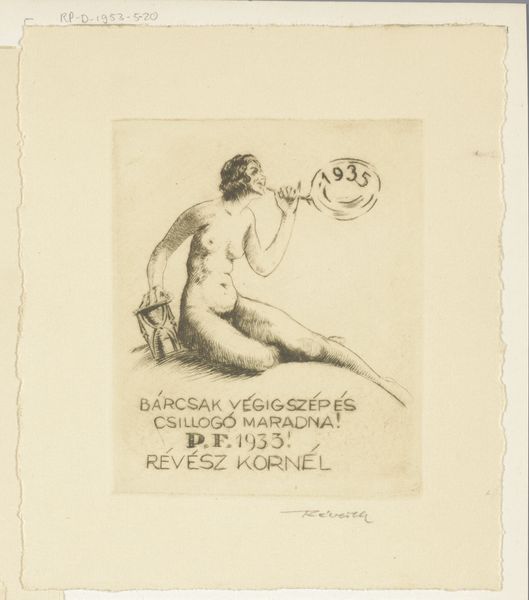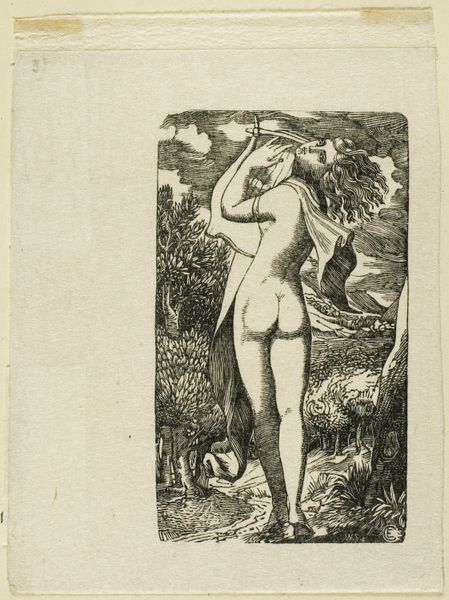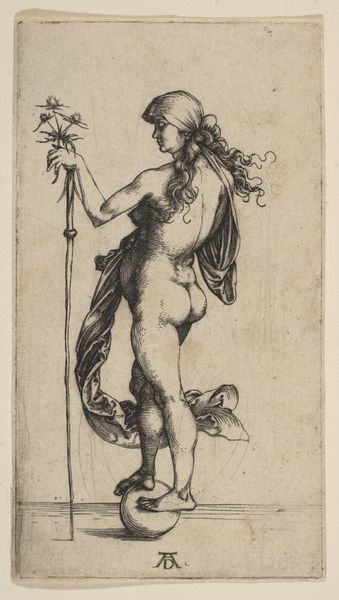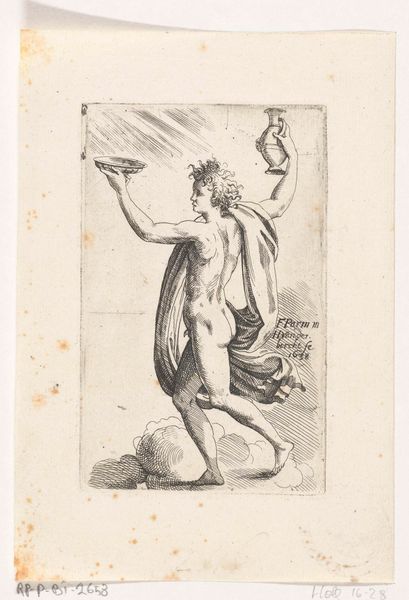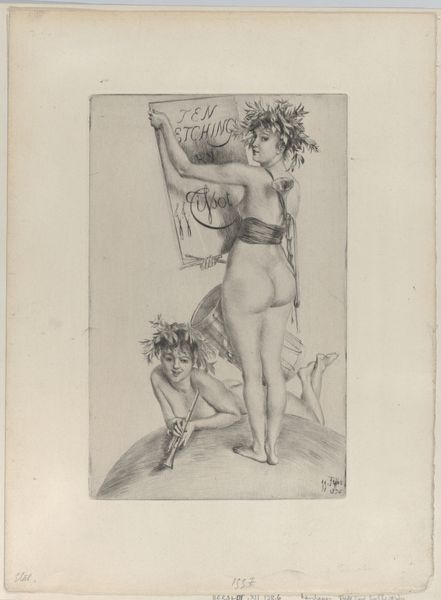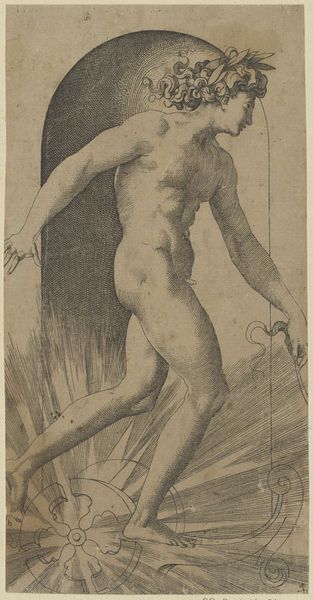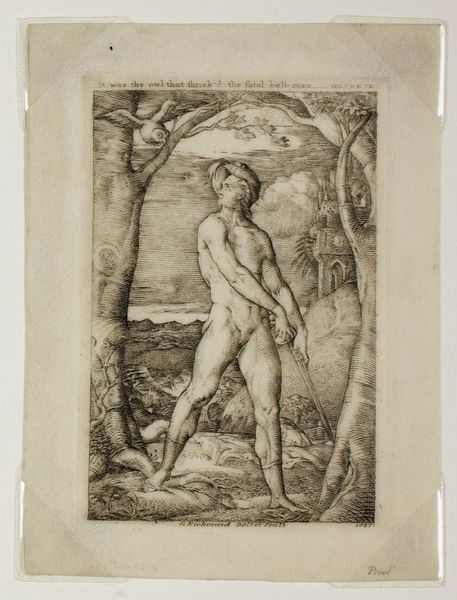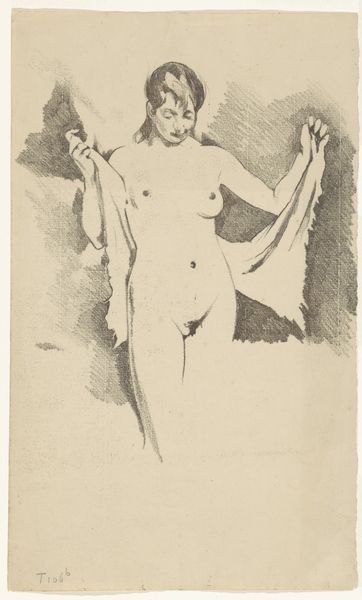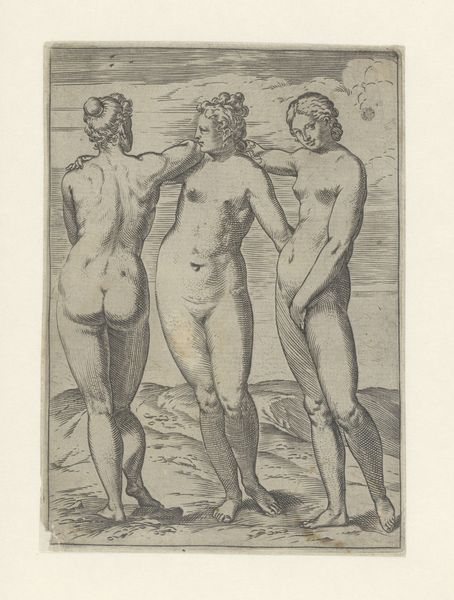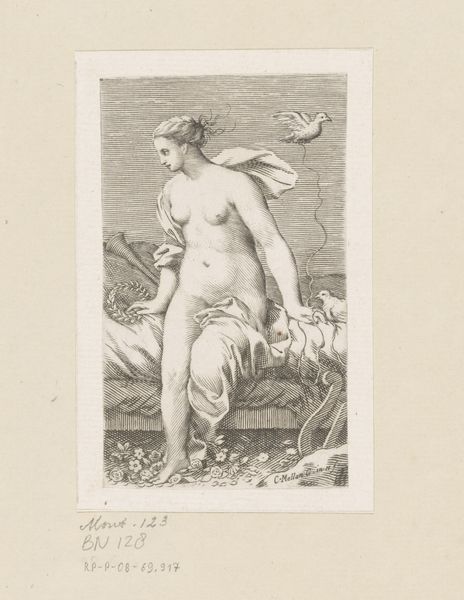
drawing, print, ink, graphite, engraving
portrait
drawing
figuration
ink
symbolism
graphite
nude
engraving
Dimensions: height 120 mm, width 78 mm
Copyright: Rijks Museum: Open Domain
Curator: Here we have an engraving from between 1867 and 1920 titled "Ex libris van Max Klinger" by the artist Max Klinger himself. Editor: The first thing that strikes me is its dreamlike quality, that delicate etching evoking a strange sense of serenity amidst a subtly unsettling atmosphere. Curator: It's fascinating to consider Klinger's position in the Symbolist movement and his challenge to academic naturalism, evident in this bookplate design. The central figure of a nude woman emerges as an embodiment, perhaps, of liberated thought. Editor: Right, look at how Klinger has rendered her – the lines used to construct her form feel so precise and controlled but still organic. Considering it as an "Ex libris" plate, intended to mark ownership, raises interesting questions. What did the making of art objects mean to him? What resources would have been used in its printmaking process? Curator: Precisely. It's important to address Klinger’s treatment of the female form in the context of his time and within art history more broadly. Are we looking at a celebration of female agency or a visual objectification conforming to some accepted patriarchal structure? Editor: Those landscapes in the background seem intentionally constructed as a contrast—distant structures neatly arranged versus the tangible sensuality of the body. Klinger is really playing with textures too; see how he etches to give a gossamer effect to the drapery she’s holding? The contrast makes us so aware of the artifice. Curator: The visual rhetoric and themes within the print certainly spark some needed dialogues about gender, and art consumption even today. To what extent are such artworks still part of current discourse? Editor: Indeed, engaging with works such as this helps us rethink conventional artistic techniques and question historical viewpoints on labor and artistic worth in art history. Curator: This piece urges us to view visual languages through an interdisciplinary lens, prompting discussions about historical and contemporary meanings that should also center issues of power. Editor: Agreed. Seeing the relationship of technique to subject really illuminates this piece beyond face value.
Comments
No comments
Be the first to comment and join the conversation on the ultimate creative platform.
